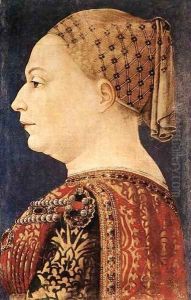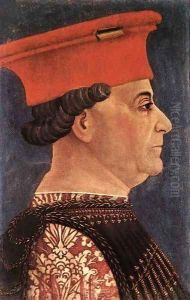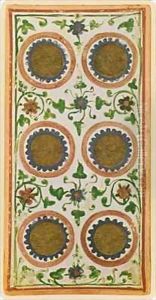Bonifazio Bembo Paintings
Bonifazio Bembo was an Italian painter and manuscript illuminator of the early Renaissance period, born around 1420. He was a member of a family of artists from Brescia, which included his brother Benedetto Bembo and his son Ambrogio Bembo, who were also active in the arts. The Bembo family played a significant role in the artistic scene of Northern Italy during the 15th century.
Bonifazio Bembo's work is typically associated with the Lombard school of painting. He is known to have been active in Cremona and Milan, as well as other cities in the region. His style was influenced by the Florentine and Sienese artistic traditions, as well as by contemporary Lombard painters. Bembo's work is characterized by its bright color palette, attention to detail, and blend of Gothic and Renaissance elements.
One of the most significant commissions Bonifazio Bembo received was from the Duke of Milan, Francesco Sforza, for whom he painted a series of frescoes in the Castello Sforzesco. However, much of his fresco work has been lost over the centuries. He is also known for his contributions to the Visconti-Sforza tarot cards, one of the earliest known sets of tarot cards, which were likely created in the mid-15th century for the Visconti-Sforza family, the rulers of Milan. These cards are considered masterpieces of the time due to their artistic quality and historical importance.
Bembo's panel paintings and altar pieces also demonstrate his skill and the high esteem in which he was held. His paintings often featured religious themes, common for the time, and he was known for his Madonna and Child compositions. Bonifazio Bembo's work contributed to the development of the Renaissance art movement in Northern Italy, bridging the gap between the late Gothic and early Renaissance styles.
Bonifazio Bembo's exact date of death is uncertain, but it is believed that he died around 1482. His legacy continued through his family and through the students who received training in his workshop. Today, his surviving works can be found in various museums and collections, providing insight into the transitional period of Italian art that paved the way for the High Renaissance masters who would follow.


